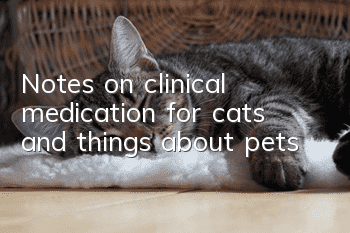Clinical symptoms and treatment methods of postpartum calcium deficiency in cats

Many pet lovers hope that their pets can survive, so they choose to breed their pets. However, if you are not a professional, you will face many problems during the pet breeding process. Postpartum calcium deficiency in cats is a relatively common disease that occurs during reproduction. The editor of Pet Cat Network will introduce to you the clinical symptoms and treatment methods of postpartum calcium deficiency in cats.
1. Clinical symptoms
The affected cat was extremely excited, had stiff limbs, and sustained tonic spasms of muscles; it was unable to stand, its eyes were trembling, its pupils were dilated, and its conjunctiva was flushed; it was frothing at the mouth, its mouth was red, and its tongue was constantly extending, and the edges were Bite and bleed; impaired consciousness, unresponsiveness, head and neck thrown back, tail raised, opisthotonus posture; body temperature between 39°C and 42°C, respiratory rate 100-160 times/min, heart rate 120-200 times /point.
2. Treatment methods
Calcium supplementation is an effective treatment for this disease. As long as sufficient calcium is supplied according to the symptoms, the treatment purpose can be achieved quickly. The prescription used is to mix 10% calcium gluconate 10-20mL with 5% glucose 100-150mL and infuse intravenously. Combined with intramuscular injection of vitin gum calcium or oral calcium tablets and cod liver oil, to enhance the effect of calcium supplementation and prevent recurrence.
- Do cats suffer from post-holiday syndrome? The main symptoms are anorexia, picky eating, depression, etc.
- How to prevent cats from scratching leather sofas?
- What is the reason why Ragdoll cats have gums in their eyes? A must-read for cat parents!
- What should I do if my cat’s eyes are inflamed? Is it suitable to use human eye drops?
- How to train your cat to be different? Cat Training!
- How to prevent cats from being infected with parasites? A senior poop shoveler vomits blood and sorts it out!
- Can a pregnant cat touch its belly?
- Why do Singaporean cats need to be neutered?
- What is the cause of gradual hair loss?
- Will cats be lonely at home?



